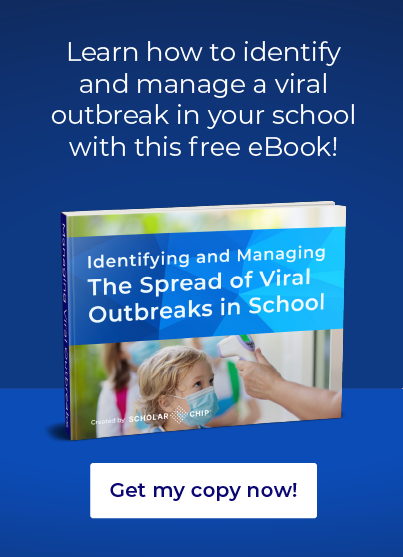Before the COVID-19 pandemic, not all schools had an established set of guidelines for dealing with sick children. In a recent poll of the UK, 70% reported sending their children to school when they were ill. The most common reason is that the parents had to go to work and had no childcare options. Another, perhaps surprising pre-COVID-19 reality was that school nurses didn’t always have a set standard for sending sick kids home. While many school nurses would send a child who had a fever back home, this wasn’t always the case. In fact, school nurses had a great deal of autonomy about whether a student needed to be sent home or not. In the age of COVID-19, this kind of lax attitude toward sick kids is no longer possible. A child with even mild symptoms could spread the illness to others. So, it’s time that we focus on rethinking illness management in our schools. In this article, we share our top strategies.
Help children and their parents identify symptoms that should keep them at home
In the past, parents sometimes sent their sick children to school. Now, however, it’s imperative that sick kids be kept at home, even if they’re only mildly ill. The CDC says, “People can get a fever, cough, or have a hard time taking deep breaths. Most people who have gotten COVID-19 have not gotten very sick.”
With that idea in mind, it’s crucial for administrators to communicate two things to parents. First, they should keep their children at home for any symptoms resembling the ones mentioned. Second, COVID-19 might not present with worse symptoms than other respiratory illnesses, but that still doesn’t mean children should “tough it out” in the classroom.
Remind families to keep their children home from school if a relative has been diagnosed
Communicate with parents about keeping children out of school if someone with whom they’ve been in close contact has been infected with COVID-19. Even if a child isn’t showing any symptoms, it’s still important to keep the child quarantined for at least two weeks.
Implement distance-learning initiatives so students don’t stay home in fear of falling behind
Another reason that parents may be hesitant to keep their mildly sick children home from school is the fear that they’ll fall behind in their classes. Offer parents peace of mind by offering students options for in-person and virtual learning, regardless if they’re sick.
For instance, ScholarChip’s ABE can help teachers continue to instruct students wherever they are. Also, if a student is having a particular issue, like concentrating or dishonesty, teachers can assign Behavior Assessment tests, quizzes, or other activities to encourage students to modify their behavior.
Encourage staff and faculty to model—and remind students—about social-distancing measures
In the same way that parents can no longer be lax about sending children to school, students need to always practice social-distancing measures. Some students may not understand why they need to social distance, or they may forget what they’ve been taught if no one seems sick.
That’s why it’s essential for faculty and staff to demonstrate social-distancing practices, like wearing a mask while inside and staying six feet away from others. If these tactics become habits for students, they’ll be more likely to continue practicing them without being reminded.
Isolate sick children until they can be sent home
A vital facet of rethinking illness management is standardizing practices for school nurses. Specifically, all sick students—no matter how close to the end of the school day or how mild their symptoms—need to be isolated and sent home immediately. COVID-19 may not present severe symptoms in every child, but even mildly symptomatic kids can spread it to others.
Keep track of how many students are regularly staying home
If you’ve enforced these guidelines at your school, you may discover that you have a considerable number of students staying home or otherwise missing days from school. It’s important to keep track of students’ attendance for two reasons. First, you want to make sure no student falls behind. Second, if you have many students regularly missing school, then you might be called on to report this information to your local public health organization.
ScholarChip offers two pieces of technology that simplify student attendance tracking. The first is the One Card. At the beginning of the year, students are given a personalized ID card. They’ll use this card to tap in at the second resource, Secure Door Access monitors, when they arrive at school. They’ll continue tapping in their attendance at every classroom they enter. If this is the only means of entry to your campus and classrooms, then you’ll be able to monitor which students are actually attending.
While studies haven’t proven that children are the predominant spreaders of COVID-19, they can still spread illness to their fellow students and staff. If you plan on opening your school this year, you must have plans like these in place to mitigate the damage that a sick student in school could unintentionally cause. Without rethinking illness management, you might find that one sick student can create significant problems.
The ScholarChip team is dedicated to helping school leaders maximize the safety and well-being of students and the entire school community.
Now sure what you should do to be able to identify and manage the spread of a viral outbreak in your school or school district? Feel free to chat with one of our school crisis communication specialists today!


